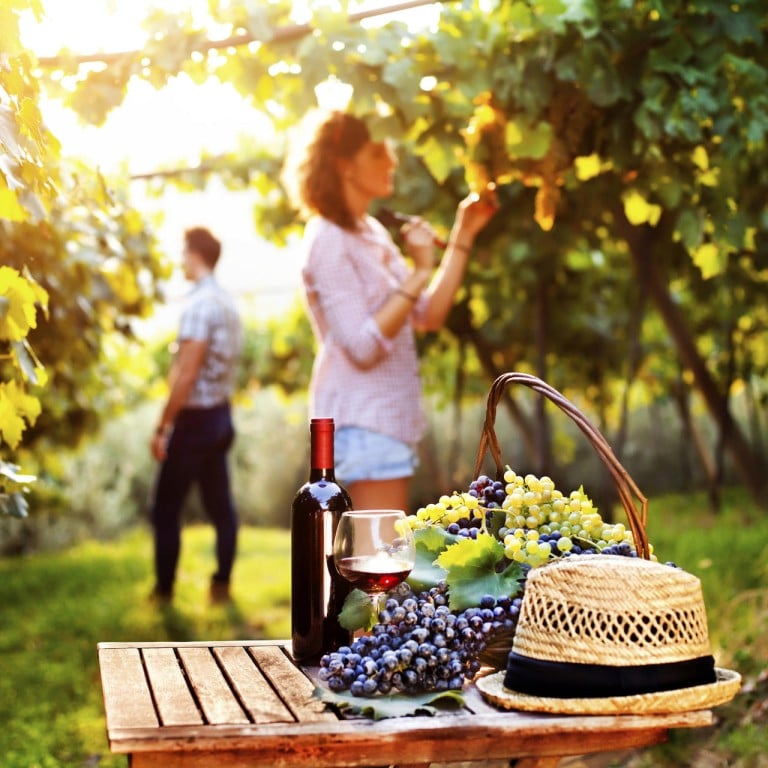Wine-lovers can take it a step further by creating their own wines

Unique wine experiences for oenophiles
You have decanted the 2011 Shiraz Grenache and let it breathe. Taking in the aroma - subtle tannins with a hint of oak and spicy plum characteristics - you swirl the medium red in its appropriate Riedel wine glass before tasting this gold medal vintage. However, it does not quite live up to expectations. There is a reason, and it has nothing to do with an unsophisticated palate. It has to do with the moon, gravity and the actual day you taste the wine - the biodynamic wine.
For wine aficionados who want to take their passion to the next level, there are a number of ways to have a special tasting experience which can offer a new dimension of wine appreciation. Biodynamic, for example, is not a new gimmick created by enterprising winemakers, but rather one of the oldest forms of organic agriculture stemming from Europe. It includes following a specific timeline when fertilising soil, planting and growing seedlings.
According to Christina Keung Mee-yee, CEO of Tina Cellar, who has been importing biodynamic wines to Hong Kong since 2008, a calendar needs to be adhered to when drinking the wine for it to taste its best. "We have to follow the moonphase. You have to drink it according to the biodynamic calendar."

There are four days in the biodynamic calendar - a fruit, flower, root and leaf day. "If you drink the wine on a fruit day, it is really scrumptious and fruity. Then if you drink it on the flower day, it's the floral notes are more obvious, and if you drink it on a root day, you taste a lot of mineral - from the same bottle of wine. On a leaf day, you smell a lot of herbaceous, green notes," Keung says.
Apart from following an agricultural lunar timeline when growing the grapes, biodynamic winemakers prescribe to nine different preparations for fertilising the soil. This includes filling a cow horn with manure and crushed powdered quartz - which can be done separately - and burying it in the ground in the autumn, where it is left to decompose during the winter and recovered the following spring. Other soil preparations include adding yarrow, chamomile blossoms, stinging nettles, dandelion and horsetail. Many Old World vineyards have incorporated biodynamic agriculture for centuries, but in recent years New World winemakers in countries such as Australia and the US are also adopting these natural methods and getting certified. This is a trend that will not be going away anytime soon, according to Keung, who says that more fine-dining restaurants and hotels are adding biodynamic wines to their menus.
Gabriel Leung, executive assistant manager, food and beverage, at The Royal Pacific Hotel and Towers, says such wines are promoted with pairing menus in the hotel's restaurants. "We have some regular guests who ask for biodynamic wines and Champagnes," Leung says, pointing out that customers say they don't have hangovers after drinking them.

Keung says: "This is because there are no chemicals in the wine."
Meanwhile, oenophiles who want to take it a step further and possess a truly unique vintage can now produce their own wines without leaving their day jobs. Britain's Berry Bros & Rudd has partnered with Bordeaux-based winery VINIV to provide this opportunity with old-vine vineyards on Bordeaux's left and right banks such as Margaux, Pauillac, Saint-Émilion, Saint Estèphe, Canon Fronsac and Graves, among others.
Wine lovers with money to spare can produce their own wines to suit their palates each year. The minimum quantity is one barrel, or 288 bottles. The process takes six to 24 months, and members can participate in winemaking decisions ranging from choosing the vineyard to finalising their blends.